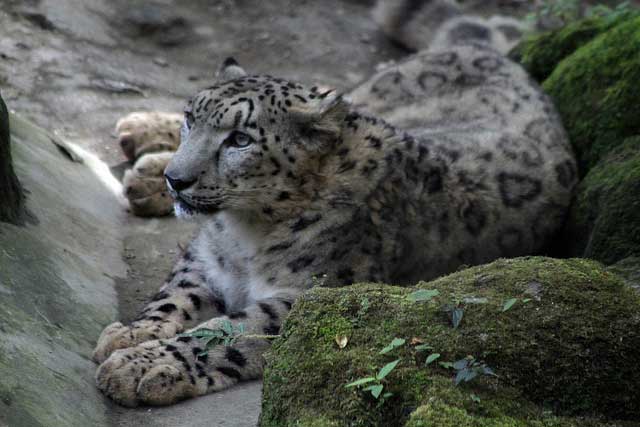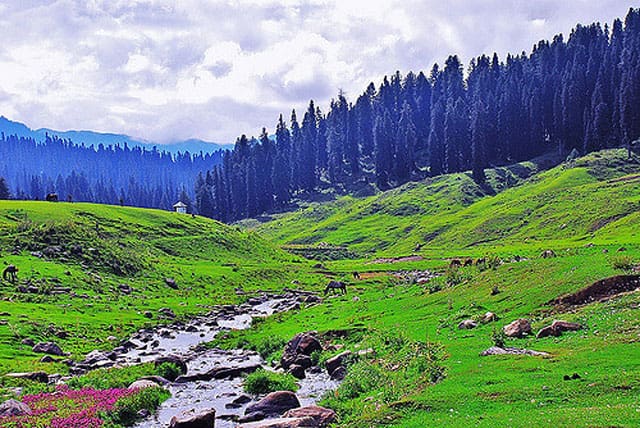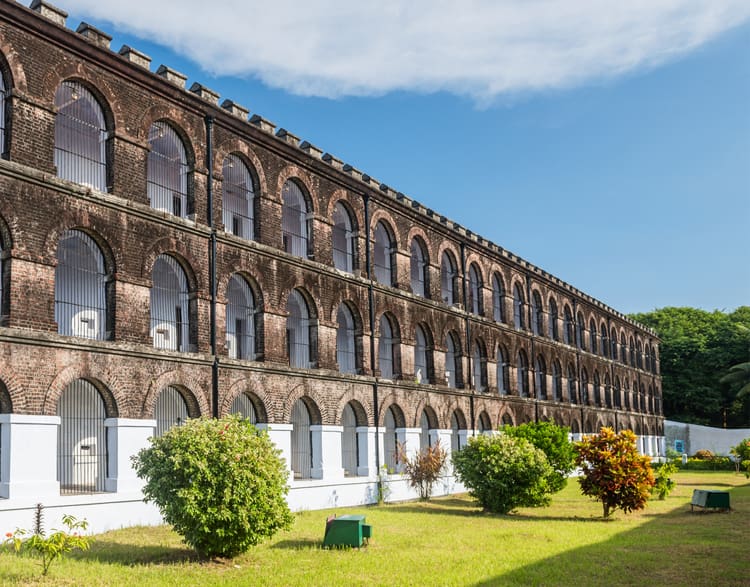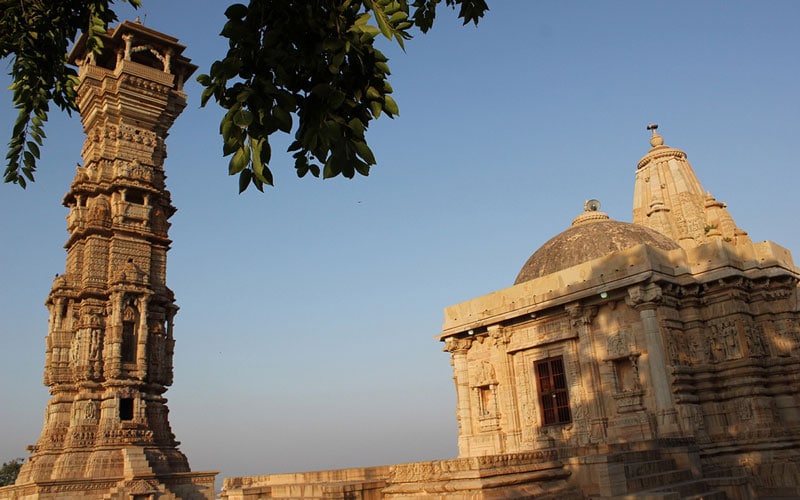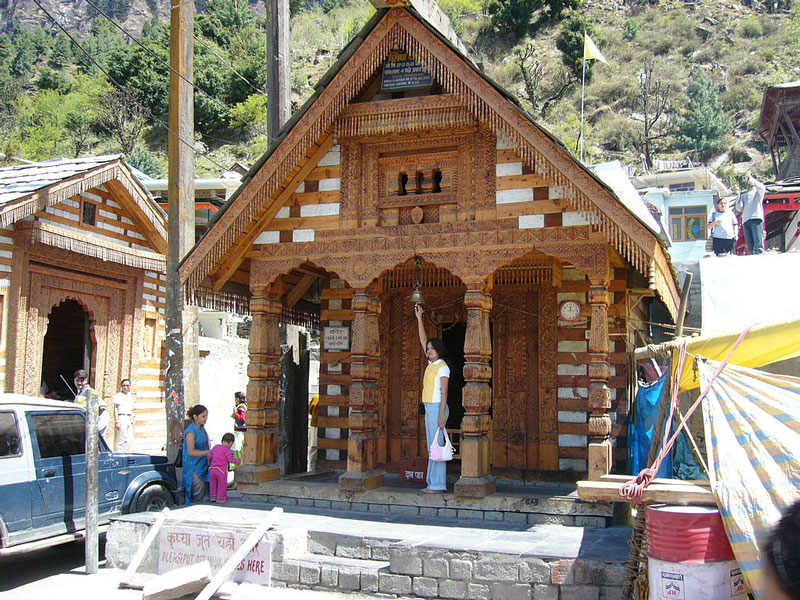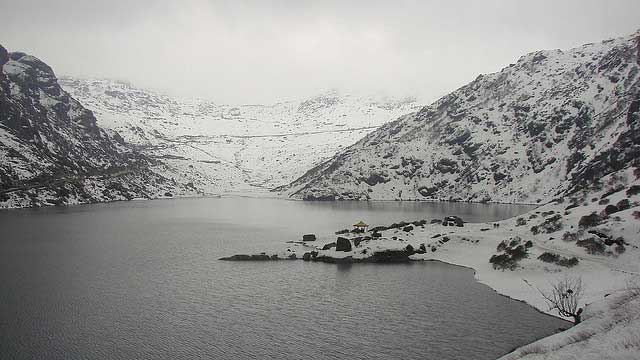Nestled amidst the breathtaking landscapes of Sikkim, the Himalayan Zoological Park stands as a testament to the region’s rich biodiversity. Established with the aim of preserving and showcasing the diverse flora and fauna of the Himalayas, this park offers visitors a unique opportunity to witness some of the rarest species in their natural habitat.
Overview of the Park
Spread across vast acres of pristine wilderness, the Himalayan Zoological Park is home to a wide array of indigenous species, including endangered animals and exotic birds. From elusive snow leopards to vibrant Himalayan monals, the park is a haven for wildlife enthusiasts and nature lovers alike.
Wildlife Conservation Efforts
The park plays a crucial role in wildlife conservation efforts, with dedicated breeding programs aimed at preserving endangered species and promoting biodiversity. Visitors can learn about these initiatives and gain a deeper understanding of the importance of conservation efforts in the fragile Himalayan ecosystem.
Educational and Research Facilities
In addition to its conservation efforts, the Himalayan Zoological Park also serves as a center for education and research. Through interactive exhibits and guided tours, visitors can learn about the region’s unique ecosystem and the challenges facing its wildlife.
Environmental Awareness Programs
The park organizes various environmental awareness programs and workshops to engage visitors in conservation efforts. From tree planting drives to wildlife photography contests, these initiatives aim to foster a sense of responsibility towards the environment and encourage sustainable practices.
Places to Visit in the Himalayan Zoological Park
As you explore the Himalayan Zoological Park, you’ll encounter a variety of attractions that showcase the beauty and diversity of the region’s flora and fauna. Here are some must-visit places within the park:
Snow Leopard Enclosure
One of the main highlights of the park is the snow leopard enclosure, where visitors can catch a glimpse of these elusive big cats in their natural habitat. With carefully designed enclosures that mimic their mountainous surroundings, the park provides a safe and comfortable environment for these endangered predators.
Conservation Significance
The snow leopard enclosure serves as a vital conservation center for this endangered species, raising awareness about the threats they face in the wild and the importance of their protection.
Educational Interpretation
Visitors can learn about the behavior and habitat of snow leopards through informative signage and guided tours led by knowledgeable park staff.
Conservation Challenges
The park also highlights the conservation challenges facing snow leopards, including habitat loss, poaching, and human-wildlife conflict, and educates visitors on how they can contribute to their conservation.
Himalayan Aviary
For bird enthusiasts, the Himalayan Aviary offers a fascinating glimpse into the region’s avian diversity. Home to a myriad of colorful species, including the Himalayan monal and the blood pheasant, the aviary is a paradise for birdwatchers.
Avian Conservation Efforts
The aviary plays a crucial role in avian conservation efforts, providing a safe haven for threatened bird species and breeding programs aimed at their preservation.
Bird Watching Opportunities
Visitors can enjoy leisurely walks through the aviary, spotting rare and beautiful birds amidst lush greenery and towering trees. Guided birdwatching tours are also available for those looking to enhance their experience.
Environmental Education
The Himalayan Aviary serves as an educational hub for avian enthusiasts, offering insights into the behavior, ecology, and conservation status of the birds housed within its confines.
Red Panda Habitat
No visit to the Himalayan Zoological Park is complete without a stop at the red panda habitat. These adorable and endangered creatures are ambassadors for the park’s conservation efforts and are sure to captivate visitors with their playful antics.
Conservation Significance
The red panda habitat raises awareness about the plight of this charismatic species and the importance of protecting their dwindling forest habitats.
Ethical Tourism Practices
Visitors can observe red pandas in a stress-free environment, free from exploitation and disturbance, ensuring their well-being and promoting ethical wildlife tourism.
Conservation Challenges
The park sheds light on the threats facing red pandas, including habitat loss, illegal wildlife trade, and climate change, and encourages visitors to take action to safeguard their future.
Things to Do at the Himalayan Zoological Park
In addition to exploring its diverse attractions, the Himalayan Zoological Park offers a range of activities and experiences for visitors of all ages. Whether you’re a wildlife enthusiast, a nature lover, or simply seeking a peaceful retreat amidst nature, there’s something for everyone to enjoy at the park.
Nature Walks and Hiking Trails
Immerse yourself in the serene beauty of the Himalayan wilderness with a leisurely nature walk or hike along the park’s scenic trails. From easy walking paths to challenging trekking routes, there are options available for all fitness levels.
Guided Nature Tours
Join experienced guides on guided nature tours through the park, where you can learn about the local flora and fauna, spot wildlife in their natural habitat, and soak in the breathtaking vistas of the surrounding mountains.
Birdwatching Excursions
Embark on birdwatching excursions to the Himalayan Aviary and other prime birding spots within the park, where you can observe a diverse array of avian species in their natural environment.
Photography Opportunities
Capture the beauty of the Himalayan landscape and its inhabitants with your camera lens, as you explore the park’s picturesque surroundings and encounter wildlife up close.
Wildlife Safaris
Experience the thrill of a wildlife safari through the park’s designated safari zones, where you can encounter a variety of indigenous species in their natural habitat.
Jeep Safaris
Hop aboard a safari jeep and venture deep into the heart of the park, where you can spot animals such as the Himalayan black bear, the red panda, and the barking deer in their natural surroundings.
Walking Safaris
For a more intimate wildlife experience, opt for a walking safari led by experienced naturalists, where you can explore off-the-beaten-path areas of the park on foot and encounter wildlife up close.
Night Safaris
Experience the magic of the Himalayan wilderness after dark with a night safari, where you can spot nocturnal animals such as the Himalayan civet, the Tibetan wolf, and the Eurasian lynx under the starlit sky.
Cultural Experiences
Immerse yourself in the rich cultural heritage of the Himalayan region with cultural experiences and interactions with local communities near the park.
Traditional Cultural Performances
Attend traditional cultural performances featuring music, dance, and rituals by local artists, and gain insights into the customs and traditions of the indigenous communities.
Handicraft Workshops
Participate in hands-on handicraft workshops led by local artisans, where you can learn traditional crafts such as weaving, pottery, and wood carving, and create your own souvenirs to take home.
Homestay Experiences
Experience the warmth and hospitality of the Himalayan people with homestay experiences in nearby villages, where you can stay with local families, sample authentic cuisine, and learn about their way of life.
Climatic Conditions and Best Time to Visit
The Himalayan Zoological Park experiences a temperate climate throughout the year, with distinct seasons that offer unique experiences for visitors. Here’s a brief overview of the climatic conditions and the best time to visit the park:
Spring (March to May)
Spring is one of the best times to visit the Himalayan Zoological Park, as the weather is mild and pleasant, and the park is adorned with colorful blooms and blossoms. It’s an ideal time for nature walks, birdwatching, and wildlife safaris.
Summer (June to August)
Summer brings warmer temperatures to the region, making it an excellent time for outdoor activities such as hiking, trekking, and wildlife safaris. However, be prepared for occasional rainfall, especially in the afternoons.
Monsoon (September to November)
The monsoon season brings heavy rainfall to the Himalayan region, transforming the landscape into a lush green paradise. While wildlife sightings may be less frequent during this time, the park’s verdant beauty makes it a photographer’s delight.
Winter (December to February)
Winter brings cold temperatures and occasional snowfall to the Himalayan Zoological Park, creating a magical winter wonderland. It’s an excellent time for wildlife spotting, especially elusive species such as the snow leopard and the Himalayan tahr.
How to Reach the Himalayan Zoological Park
The Himalayan Zoological Park is located near Gangtok, the capital city of Sikkim, making it easily accessible by road. Here’s how you can reach the park from major cities in the region:
By Air
The nearest airport to the Himalayan Zoological Park is Bagdogra Airport in West Bengal, which is well-connected to major cities such as Kolkata, Delhi, and Guwahati. From the airport, you can hire a taxi or take a bus to reach Gangtok, from where the park is just a short drive away.
By Train
The nearest railway station to the Himalayan Zoological Park is New Jalpaiguri Railway Station in Siliguri, which is well-connected to major cities across India. From the railway station, you can take a taxi or a shared jeep to reach Gangtok, and then proceed to the park.
By Road
Gangtok is well-connected to neighboring states by a network of roads, making it easily accessible by bus, taxi, or private vehicle. From Gangtok, you can hire a taxi or take a local bus to reach the Himalayan Zoological Park, which is located approximately 3 kilometers away from the city center.
History of the Himalayan Zoological Park
The Himalayan Zoological Park was established in [year] with the aim of conserving the rich biodiversity of the Himalayan region and promoting eco-tourism in Sikkim. Over the years, the park has grown into a premier destination for wildlife enthusiasts and nature lovers, attracting visitors from across the globe.
Founding Vision
The park was founded on the vision of creating a sanctuary for endangered species and providing a platform for research, education, and conservation initiatives. Since its inception, it has played a pivotal role in raising awareness about the importance of preserving the fragile Himalayan ecosystem.
Growth and Expansion
Over the years, the Himalayan Zoological Park has undergone significant growth and expansion, with the addition of new exhibits, breeding facilities, and visitor amenities. Today, it stands as a model for sustainable wildlife tourism and environmental stewardship in the region.
Conservation Milestones
The park has achieved several conservation milestones over the years, including successful breeding programs for endangered species, rehabilitation efforts for rescued wildlife, and collaborations with local communities to promote coexistence with wildlife.
Food Options at the Himalayan Zoological Park
After a day of exploring the park’s attractions, visitors can refuel and relax at the various food options available within the premises. From local delicacies to international cuisine, there’s something to suit every palate at the Himalayan Zoological Park.
Cafeteria
The park features a cafeteria where visitors can enjoy a selection of snacks, beverages, and light meals amidst stunning views of the surrounding mountains. Grab a quick bite or unwind with a hot cup of tea while soaking in the natural beauty of the Himalayas.
Food Stalls
In addition to the cafeteria, there are also food stalls scattered throughout the park, offering a variety of local and international dishes. Sample traditional Sikkimese delicacies such as momos, thukpa, and gundruk soup, or opt for familiar favorites like sandwiches and burgers.
Picnic Areas
For those who prefer to bring their own food, there are designated picnic areas within the park where you can enjoy a leisurely meal amidst nature. Pack a picnic basket with your favorite snacks and beverages and find a scenic spot to relax and unwind with family and friends.
Accessibility and Accommodation Options
The Himalayan Zoological Park is committed to providing accessible facilities and accommodations for visitors of all abilities. Here’s what you need to know about accessibility and accommodation options at the park:
Accessibility
The park features wheelchair-accessible pathways, restrooms, and amenities to ensure that visitors with mobility challenges can enjoy a comfortable and enjoyable experience. Additionally, trained staff are available to assist visitors with special needs upon request.
Accommodation
While there are no accommodations within the park itself, visitors can find a range of lodging options in nearby Gangtok, ranging from budget guesthouses to luxury resorts. Whether you’re looking for a cozy homestay or a five-star hotel, there’s something to suit every budget and preference in Gangtok.
Accessibility Services
Many hotels and guesthouses in Gangtok offer accessibility services such as wheelchair-accessible rooms, accessible transportation, and assistance with mobility equipment rental. Be sure to inquire about these services when making your reservation to ensure a comfortable stay.
Nearby Hotels and Restaurants
For visitors looking to extend their stay in the area, there are plenty of hotels and restaurants in and around Gangtok that offer comfortable accommodations and delicious dining options. Here are some recommendations:
Hotels Near Padmaja Naidu Himalayan Zoological Park
1. North Point
- Distance from Park: 0.3 km
- Rating: Not rated yet
- Description: North Point hotel offers convenient accommodation just a short distance away from Padmaja Naidu Himalayan Zoological Park. With its proximity to the park, guests can easily access the park’s attractions and enjoy a comfortable stay in Darjeeling.
2. Takdah Heritage Bungalow
- Distance from Park: 0.3 km
- Rating: Not rated yet
- Description: Takdah Heritage Bungalow provides a unique lodging experience in close proximity to Padmaja Naidu Himalayan Zoological Park. Guests can enjoy the charm of a heritage bungalow while exploring the natural beauty of Darjeeling.
3. Krishna Residency
- Distance from Park: 1.0 km
- Rating: 7.8 – Good (176 reviews)
- Description: Krishna Residency offers comfortable accommodations just a short distance from Padmaja Naidu Himalayan Zoological Park. With its convenient location and good ratings, it’s a popular choice among travelers visiting Darjeeling.
4. Mayfair Darjeeling
- Distance from Park: 1.2 km
- Rating: 8.7 – Excellent (509 reviews)
- Description: Mayfair Darjeeling is a luxury hotel located a short distance from Padmaja Naidu Himalayan Zoological Park. With its excellent ratings and upscale amenities, it’s an ideal choice for travelers looking for a luxurious stay in Darjeeling.
5. Treebo Trend Nirvana
- Distance from Park: 1.3 km
- Rating: 9.5 – Excellent (676 reviews)
- Description: Treebo Trend Nirvana offers modern accommodations with excellent ratings near Padmaja Naidu Himalayan Zoological Park. Guests can enjoy comfortable rooms and convenient amenities during their stay in Darjeeling.
6. Hermitage Resort
- Distance from Park: 1.6 km
- Rating: 8.1 – Very good (38 reviews)
- Description: Hermitage Resort provides comfortable lodging options a short distance away from Padmaja Naidu Himalayan Zoological Park. With its good ratings and convenient location, it’s a popular choice for travelers seeking value and comfort in Darjeeling.
Restaurants
- The Himalayan Cafe: This charming cafe in Gangtok serves up delicious local and international cuisine, with a focus on fresh, seasonal ingredients and bold flavors.
- Everest View Restaurant: Enjoy panoramic views of the Himalayas while savoring authentic Tibetan and Nepali dishes at Everest View Restaurant, known for its warm hospitality and hearty meals.
Travel Tips for Visiting the Himalayan Zoological Park
To make the most of your visit to the Himalayan Zoological Park, here are some travel tips to keep in mind:
Dress Appropriately
The weather in Sikkim can be unpredictable, so it’s essential to dress in layers and wear sturdy walking shoes for exploring the park’s trails and attractions.
Stay Hydrated
Carry a reusable water bottle and stay hydrated, especially during outdoor activities such as hiking and wildlife safaris.
Respect Wildlife and Environment
Observe wildlife from a safe distance and refrain from feeding or disturbing them. Remember to dispose of trash responsibly and leave no trace of your visit to help preserve the park’s natural beauty.
Follow Park Rules and Guidelines
Familiarize yourself with the park’s rules and regulations, and adhere to signage and instructions provided by park staff for a safe and enjoyable experience.
10 FAQs About the Himalayan Zoological Park
- What are the opening hours of the Himalayan Zoological Park?
- The park is open daily from [opening hours].
- Is photography allowed inside the park?
- Yes, photography is permitted for personal use. However, commercial photography and videography require prior permission from park authorities.
- Are guided tours available at the park?
- Yes, guided tours are available for visitors who wish to learn more about the park’s flora, fauna, and conservation efforts.
- Can I bring food and drinks into the park?
- Outside food and drinks are not allowed inside the park. However, there are food options available within the premises.
- Are there any restrictions on entry for children and senior citizens?
- There are no age restrictions for entry into the park. However, children must be accompanied by adults at all times.
- Is the park wheelchair accessible?
- Yes, the park features wheelchair-accessible pathways, restrooms, and amenities for visitors with mobility challenges.
- Are there any accommodations available within the park?
- No, there are no accommodations within the park. However, there are plenty of lodging options available in nearby Gangtok.
- Is the Himalayan Zoological Park open year-round?
- Yes, the park is open year-round, though visiting hours may vary depending on the season.
- Can I volunteer at the park?
- Yes, the park offers volunteer opportunities for individuals interested in wildlife conservation and environmental education.
- Is the Himalayan Zoological Park suitable for family outings?
- Yes, the park is a great destination for family outings, with plenty of attractions and activities for visitors of all ages to enjoy.
Conclusion
A visit to the Himalayan Zoological Park in Sikkim promises a memorable experience filled with wildlife encounters, breathtaking scenery, and cultural immersion. Whether you’re exploring its diverse attractions, participating in outdoor activities, or simply soaking in the natural beauty of the Himalayas, the park offers something for everyone to enjoy. Plan your visit today and discover the wonders of this pristine wilderness sanctuary.




